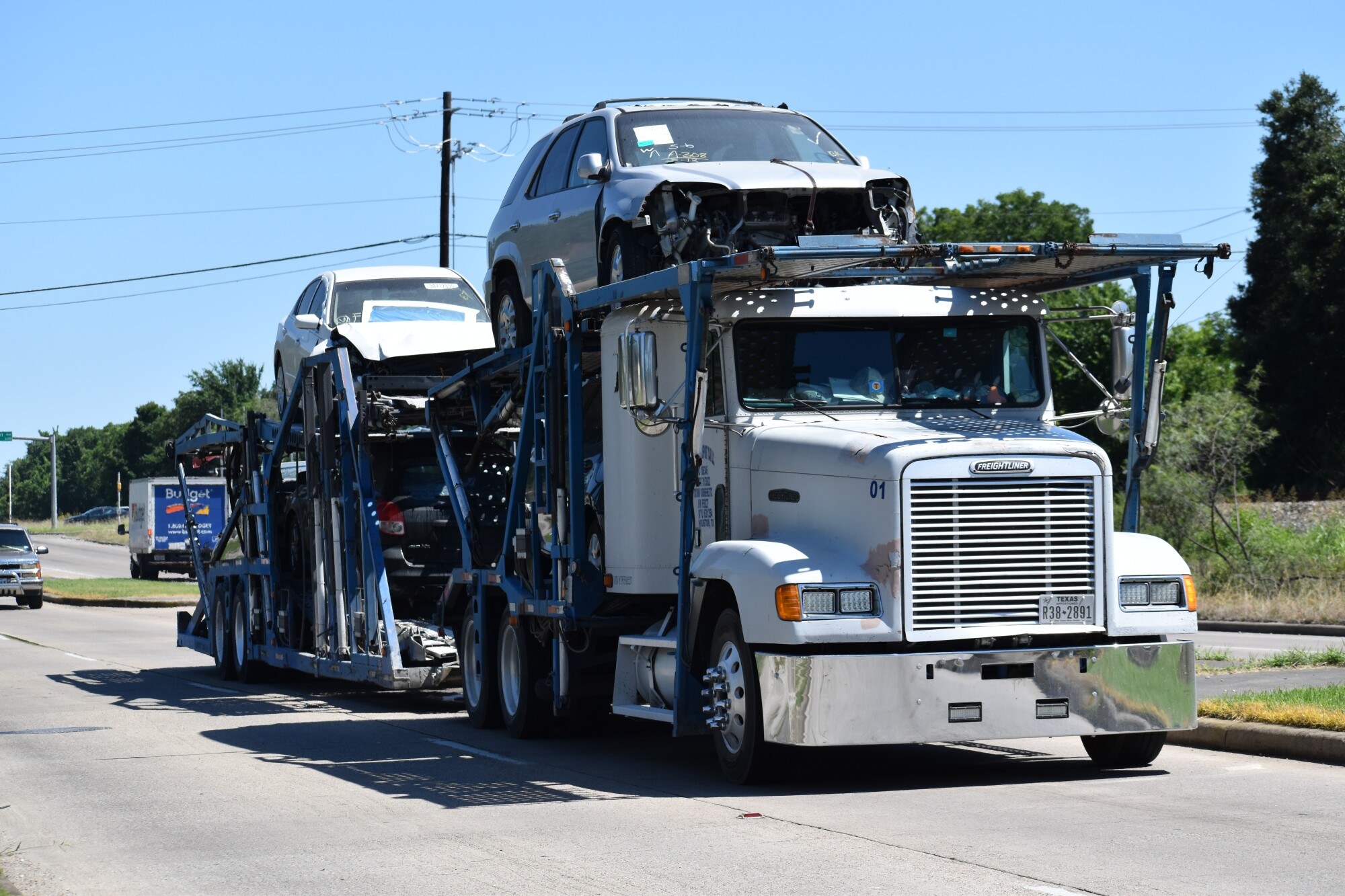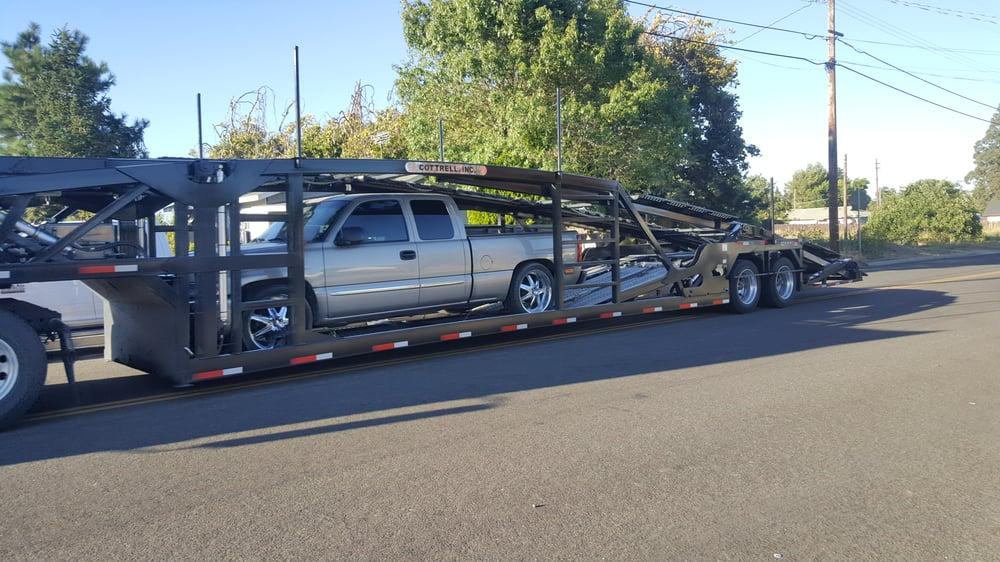If you’re looking to get an electric car, you are not alone. It’s estimated that in 2035, a quarter of the vehicles sold in the United States will be electric!
In joining the electric revolution, many things about daily driving will change.
One thing you don’t want to get caught unprepared for is, what happens if your electric car breaks down. This article will give you all the information you need about towing an electric car.
Can You Tow an Electric Car?
Yes, an electric car can be towed with a flatbed carrier tow truck. EVs require all four tires to be off the ground during towing because they lack a transmission that can disconnect the engine from the wheels. Using a chain and hook tow truck can induce a current in the electric motor, potentially damaging electronics and causing the motor to overheat. Therefore, a flatbed carrier is the best and only option for towing EVs safely.Why Tow an Electric Car?
With all the technology, additional features, and quirks electric cars are known to have, why would you ever need to tow one? Despite all the changes and differences in electric vehicles, they are still subject to breaking down, just like gas-powered vehicles.
Flat Tires: Electric cars are subject to flat tires. Many electric and gasoline-powered cars today are ditching the spare tire in the car to allow for more room. With this, if you get a flat tire, you’re going to need a tow.
Running out of Charge: Gas-powered vehicles can run out of gas; electric vehicles can run out of battery charge. If the battery on your electric car dies while you’re on the road, the car will stop running. Like a phone, it will just stop working completely until it gets plugged in and is charged.
Brake Issues: Brakes are necessary for both electric and gas vehicles. If you notice issues with the brakes while driving, or your car alerts you to any brake issues while driving, it’s best not to risk it. Safely pull the vehicle over and call a tow to bring your car to the nearest place it can get serviced.
Car Shipping: You may also need to transport your electric car if moving to another state. To save time and a vehicle's overall condition, it’s common to request auto transport for both electric and gasoline cars to the new location.
How Towing an Electric Car Differs from Towing a Regular Car
Unlike traditional cars with internal combustion engines (ICE), electric cars (EVs) have special considerations regarding towing.
If you need to tow your electric car, it's crucial to follow the guidelines provided by the car manufacturer. For example, the Tesla Model 3 manual advises keeping the car's tires off the ground during towing.
This is important because electric motors generate power when the wheels spin, similar to how regenerative braking works. Even if your electric car has a neutral mode, the motor is often still connected to the wheels. Therefore, it's essential to ensure that the tires never touch the ground while towing to prevent any damage.
If you ever find yourself in a situation where your electric car needs towing, ensure the tow truck driver follows the proper instructions provided by the manufacturer. If you notice that they are not following the guidelines, asking them to stop is safer. It's better to avoid potential damage to your electric car than to rush into a solution that could lead to irreparable harm.
Towing an Electric Car
Even gasoline-powered counterparts can suffer from severe transmission or engine damage from being towed incorrectly. An electric vehicle that has computers on the tires, batteries, and sensors, has even more things that could go wrong. But with a flatbed trailer and some extra care, your electric car can be towed safely.
Nissan clearly states that the Leaf should never be towed with the front wheels on the ground or its four wheels on the ground. They can be towed with two wheels on the ground as long as it’s the rear set.
But just because they can, does not mean that they should be. The guidance from all electric car manufacturers is that they all need to be towed on a flatbed to avoid potentially catastrophic damage to the vehicle.
To determine what wheels can be on the ground, you must know what drivetrain the vehicle has. Since the Nissan Leaf is a front-wheel drive, the front wheels should never be in movement unless the car is being driven.
Most Tesla’s are all-wheel drive, meaning that power goes to all 4 wheels of the car. Some of them are rear-wheel drive. With this, the rear wheels of the Tesla should not be moving unless the car is being driven.
The Tesla manual states to tow their vehicles with all four wheels off the ground. Tesla Model 3 wheels should not spin unless it’s under 3mph and for 30 ft. In the manual for the Model S, there is a fire icon on the tow warnings.
The icon alerts users to just one of the catastrophic hazards that could occur should it be towed incorrectly.
Loading Your EV Onto the Flatbed
Consult your specific vehicle’s manual to locate where tow chains can be securely and safely attached to your vehicle.
The Tesla has a tow hook, called a tow eye in Tesla language, conveniently located on the lower left-hand side of the front fender. The slot for the tow eye is hidden behind a cover that can be removed with a small flat screwdriver. Insert the screwdriver into the slot to gently snap the cover off.
With the tow eye slot exposed, attach the tow eye to the slot by rotating it counterclockwise until it’s secure. Once secured, attach a winch cable or tow chains directly to the tow eye. Place the vehicle in neutral, or tow mode, and allow the truck to load the vehicle up onto the flatbed.
Some vehicles do not have a dedicated tow hook, or even if they do, do not recommend pulling the car from it. The Nissan Leaf has both front and rear tow hooks attached permanently but says they are to be used for securing the car during transport and not for towing.
For these vehicles, the winch cable or tow chains must be attached underneath the vehicle to the main structure of the car.
Prevention Steps to Avoid Breaking Down
Managing electric cars is relatively easy, and as long as you perform maintenance promptly, they will run smoothly without any problems. Fortunately, there are several proactive measures you can take to avoid the hassle of towing or jump-starting your electric vehicle.
The most effective way to prevent being stranded is to maintain a charged vehicle and be mindful of its range. You should perform standard maintenance on your electric vehicle regularly. Also, be vigilant about addressing any warning lights or sensor alerts to avert potential breakdowns.
Electric cars only have three main fluids: coolant, windshield wiper fluid, and brake fluid. To keep your car well-maintained, it is important to check the coolant and brake fluid. Most other fluids used in electric cars are enclosed within the engine and other inaccessible parts. Therefore, a visit to a professional is necessary for level inspections.
Safely Transport Your Electric Vehicle
Buying an electric car is a big financial investment. Learning all the new guidances and issues that could come with it also requires a big investment of time.
Knowing the basics when towing an electric car or requesting a company to do so, like stating that you need a flatbed trailer, can help tremendously in protecting your vehicle and saving money as well.
Contact us today to discuss the transport of your electric car, or continue reading our blog to learn more!


